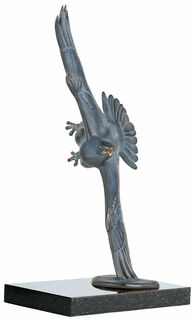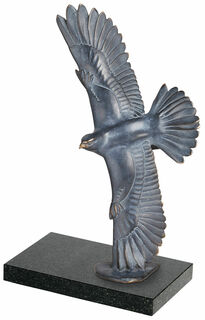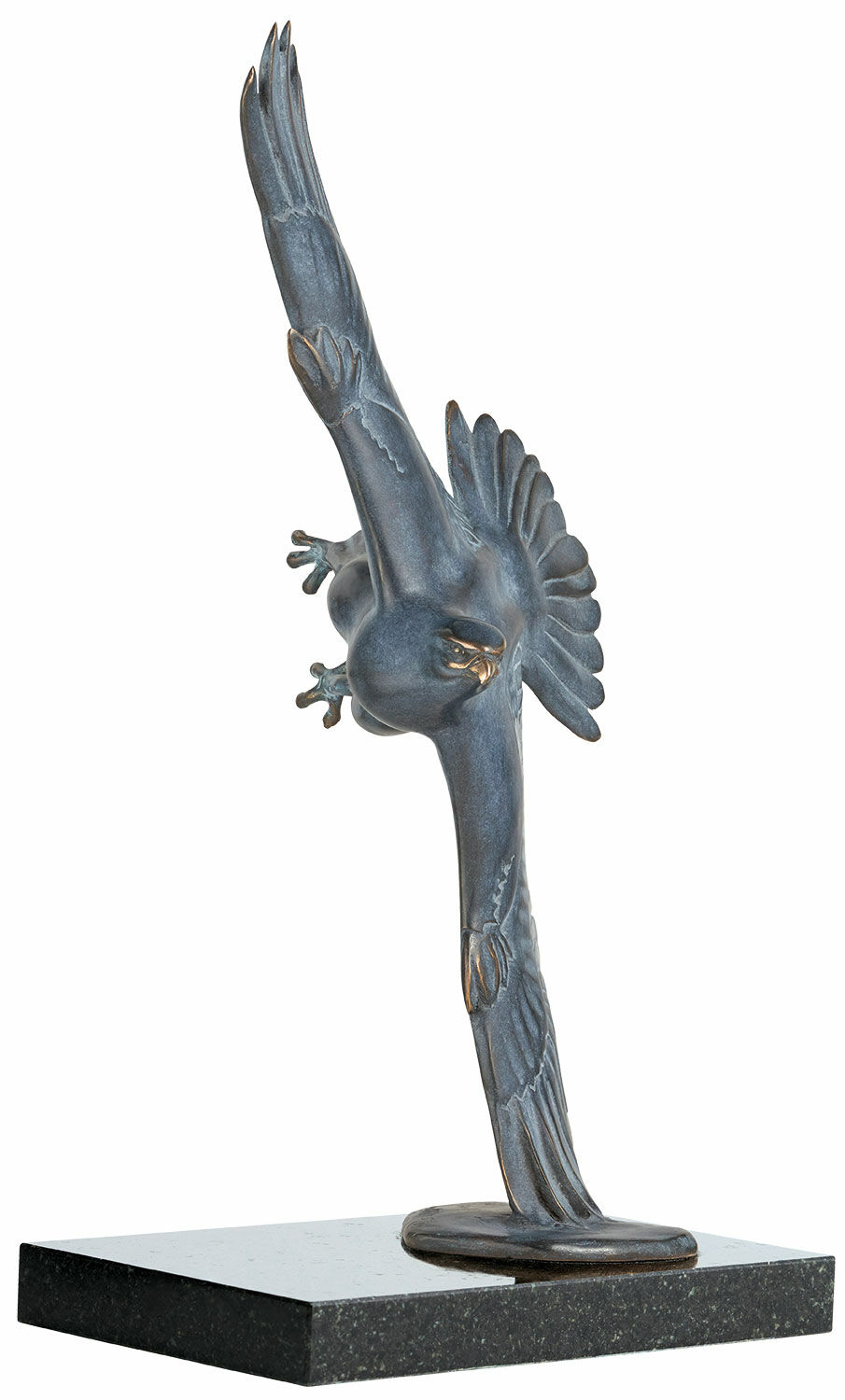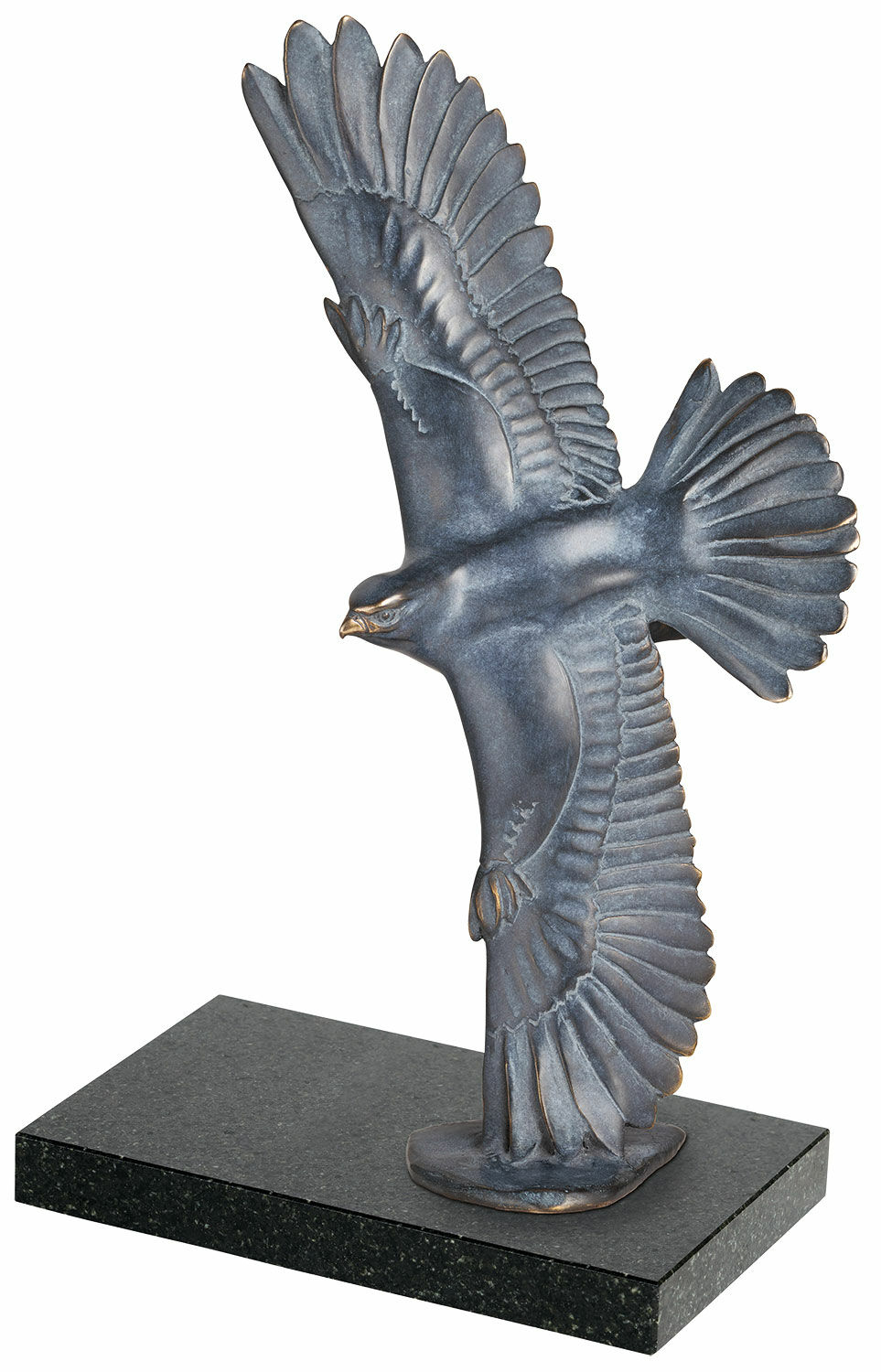Sculpture "Falcon", bronze
Sculpture "Falcon", bronze
Quick info
ars mundi Exclusive Edition | limited, 99 copies | numbered | monogrammed | signed | hallmarked | certificate | bronze | chased | polished | patinated | size approx. 30 x 16 x 18 cm (h/w/d) | weight approx. 3.3 kg
Video
Detailed description
Sculpture "Falcon", bronze
The Falcon by Kristin Kolb is the highest level of animal art. The bird of prey is depicted in a moment of tension and with a sharp gaze: It is still watching, sizing up its target, but in the next split second it will swoop down.
Sculpture in fine bronze, cast using the Lost-Wax-Process, chiselled by hand, polished and patinated. Limited edition of 99 copies, numbered, monogrammed, signed and hallmarked with the foundry and ars mundi stamp. With numbered certificate of authenticity and limitation. Size approx. 30 x 16 x 18 cm (h/w/d). Weight approx. 3.3 kg. ars mundi Exclusive Edition.
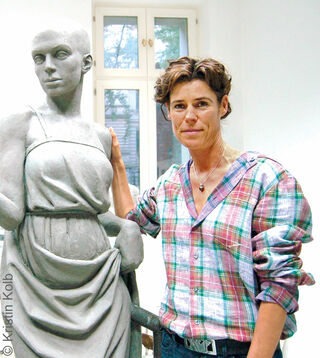
About Kristin Kolb
Kristin Kolb (born in 1962), although she was already artistically active and extraordinarily talented as a young woman, it was not until 2011 that she took the final professional step into the fine arts. This may be surprising given her perfection in craftsmanship, but as a self-taught artist, it has always been only her works and no classical academic art training that could testify in her favour. The fact that this does not play a role in her case is immediately apparent - for her sculptural works and her painting, which also occupy her - and, judging by her exhibition biography, the art world has long since become increasingly interested in her.
An alloy of copper with other metals (especially with tin) used since ancient times.
When casting bronze, the artist usually applies the lost-wax technique which is dating back more than 5000 years. It's the best, but also the most complex method of producing sculptures.
First, the artist forms a model of his sculpture. It is embedded in a liquid silicone rubber mass. Once the material has solidified, the model is cut out. The liquid wax is poured into the negative mould. After cooling down, the wax cast is removed from the mould, provided with sprues and dipped into ceramic mass. The ceramic mass is hardened in a kiln, whereby the wax flows out (lost mould).
Now we finally have the negative form, into which the 1400° C hot molten bronze is poured. After the bronze had cooled down, the ceramic shell is broken off and the sculpture is revealed.
Now the sprues are removed, the surfaces are polished, patinated and numbered by the artist himself or, to his specifications, by a specialist. Thus, each casting becomes an original work.
For lower-quality bronze castings, the sand casting method is often used which, however, does not achieve the results of a more complex lost-wax technique in terms of surface characteristics and quality.
Graphic or sculpture edition that was initiated by ars mundi and is available only at ars mundi or at distribution partners licensed by ars mundi.
A plastic work of sculptural art made of wood, stone, ivory, bronze or other metals.
While sculptures from wood, ivory or stone are made directly from the block of material, in bronze casting a working model is prepared at first. Usually, it is made of clay or other easily mouldable materials.
The prime time of sculpture after the Greek and Roman antiquity was the Renaissance. Impressionism gave a new impulse to the sculptural arts. Contemporary artists such as Jorg Immendorf, Andora, and Markus Lupertz also enriched sculptures with outstanding works.

